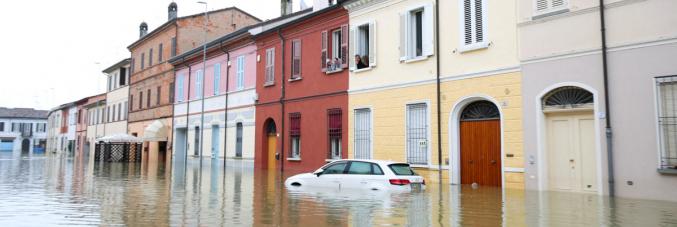
Unipd: The principle of climate invariance must be applied
14.05.2025
Two years after the flood that hit Romagna between May 15th and 18th, 2023, causing numerous victims, with damages estimated at 8.5 billion euros and nearly 70,000 landslides, the necessity for a systematic approach to reduce hydrological and hydraulic risk is evident. This disaster, the worst in Italy since the Polesine flood in 1951, highlighted the vulnerabilities of the territory, as evidenced by technical analyses from the Centre for the Study of the Impacts of Climate Change (CRITICAL) at the University of Padua. Funded by the National Recovery and Resilience Programme, the RETURN partnership has emphasised how ongoing climate change is increasing the intensity of extreme events.
Historical observations of precipitation, such as those from Padua dating back to 1725, show that the intensity of extreme rainfall has increased by 20% since the mid-20th century. Existing infrastructure is therefore inadequate for the current climate, and climate change could worsen the situation. In the basins affected by the 2023 flood, extreme precipitation could increase by between 30% and 50% by the end of the century, making these events more frequent.
Marco Marani, director of CRITICAL and professor at the University of Padua, stresses the need to act quickly to avoid further human and economic losses. It is crucial to avoid building in risk areas and to consider climate change in planning. The adoption of a principle of climate invariance is essential: every intervention on the territory must ensure that future risk is no greater than that of 1900.
It is necessary to adopt a principle of climate invariance: every time an intervention is made on the territory, the changes made – whether the construction or reorganisation of urban or industrial centres or infrastructure such as embankments, bridges, roads or railways – must ensure that the risk to which they will be subject by 2100 is at least equal to, or lower than, that which affected them at the beginning of the 1900s. Only in this way will it be possible to systematically adapt our territory to a risk that will soon become unsustainable.
"We have the technical knowledge to support planners and designers, and we can therefore choose whether to suffer or manage climate change," says Marco Marani, but faster political and individual action is needed to address this challenge: "We need to heed the signal sent, among others, by the Romagna event. We are moving too slowly to tackle climate change: political and individual action is needed to accelerate the adaptation process.".



